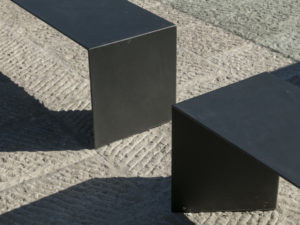The new steel pedestrian bridge over the Dragon King Harbour River in the Chinese mega city Changsha fits perfectly in the sequence of iconic bridges that characterise NEXT’s practice; by explicitly engaging with the local context, the bridge designs offer new perspectives. “The city is growing and changing rapidly. This context called for a unique gesture to inspire passers-by,” comments Michel Schreinemachers, partner at NEXT architects Amsterdam.
The bridge is a key project in developing the area’s public space, and was designed with recreational, ecological and tourist activities in mind. The bridge connects multiple levels at different heights (the river banks, the road, the higher-placed park as well as the interconnections between them). The final shape of the bridge is the result of -literally and metaphorically- knotting all these routes together. “The shape of the Lucky Knot was inspired by the principle of the Mobius ring, as well as by the Chinese knotting art. In the ancient decorative Chinese folk art, the knot symbolises luck and prosperity,” says John van de Water, partner at NEXT architects Beijing. The bridge owes its imaginative appeal to the combining of tradition and modernity.
“The Lucky Knot is more than a bridge and a connection between two river banks. Its success lays in bringing cultures together, and in the fusion of history, technology, art, innovation, architecture and spectacle,” adds NEXT architects Beijing partner Jiang Xiaofei.
The Lucky Knot connects, illuminates and entertains. The bridge offers a spectacular view of the river, Meixi Lake, the city of Changsha and the surrounding mountain range. Thanks to its remarkable LED lightshow, the bridge is set to become a landmark attraction in the light route that traces the path of the Dragon King Harbour River.
















